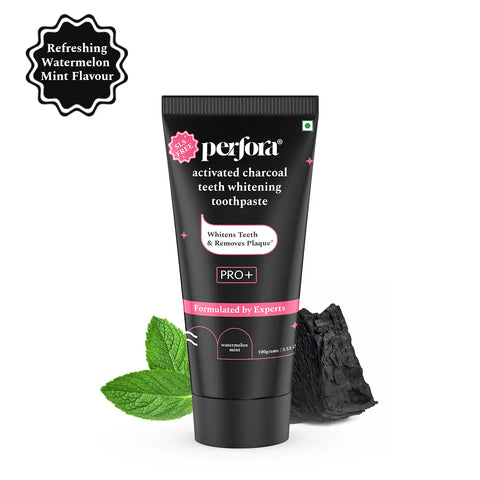Introduction
In the ever-evolving world of oral health care, a new star is rising on the horizon, promising to revolutionise our dental hygiene routines. This breakthrough ingredient, known as nano hydroxyapatite, is making waves for its remarkable benefits and effectiveness. In this comprehensive blog, we'll dive deep into understanding nano hydroxyapatite, explore the myriad benefits of nano hydroxyapatite toothpaste, guide you in choosing the right product, and speculate on its future in oral care.
Key Takeaways
- Nano Hydroxyapatite: A revolutionary ingredient closely mimicking human enamel and bone composition, offering unmatched benefits in oral care.
- Benefits: Restores enamel, provides sensitivity relief, safe and natural, promotes overall oral health.
- Choosing the Right Toothpaste: Look for high-quality nano hydroxyapatite, check for additional benefits, avoid harmful ingredients, consider personal needs.
- Future Outlook: Nano hydroxyapatite could shape the future of oral care with its natural properties and comprehensive benefits, potentially becoming an industry standard.
What Is Nano Hydroxyapatite
Nano hydroxyapatite (nHAp) is a biocompatible material that closely mimics the natural composition of human enamel and bone. It's a form of calcium phosphate that has been engineered on a nanoscale to enhance its properties and effectiveness when used in dental products. The history of hydroxyapatite in medicine and dentistry is long and storied, with its use in bone grafting and repair due to its remarkable similarity to human bone mineral. However, when it comes to oral care, nano hydroxyapatite represents a cutting-edge adaptation, offering unparalleled benefits in remineralization and protection of teeth.
The Benefits of Nano Hydroxyapatite Toothpaste
The transition towards nano hydroxyapatite toothpaste marks a significant leap in our quest for safer, more natural, and more effective dental care solutions. Here's why nano hydroxyapatite toothpaste is gaining popularity among dental care professionals and consumers alike:
Enamel Restoration and Remineralization
Nano hydroxyapatite is renowned for its ability to mimic the natural building blocks of teeth. It actively contributes to the remineralization process, helping to repair minor scratches and chips, and slowing down the early stages of tooth decay. This not only strengthens the teeth but also restores their natural whiteness by filling in microscopic pits and fissures on the tooth surface.

Enhanced Sensitivity Relief
For those suffering from tooth sensitivity, nano hydroxyapatite toothpaste can be a game-changer. It works by sealing exposed dentin tubules, the primary cause of sensitivity to hot, cold, and acidic foods. This protective layer provides immediate and long-lasting relief, making it an excellent alternative to other tooth sensitivity solutions.
Natural and Safe
In a market saturated with products containing harsh chemicals, nano hydroxyapatite stands out for its biocompatibility and safety. It's a naturally occurring substance in the body, making it an ideal choice for those looking to maintain a holistic and health-conscious oral care regimen. Unlike some fluoride-based products, nano hydroxyapatite toothpaste is free from toxic risks, making it safe for the entire family, including children.
Promotes Overall Oral Health
Nano hydroxyapatite doesn't just stop at remineralizing enamel and tackling sensitivity. It also promotes a healthier oral microbiome by neutralising acids and providing a hostile environment for harmful bacteria to thrive. This multifaceted approach not only ensures stronger teeth but also healthier gums and fresher breath.

Choosing the Right Hydroxyapatite Toothpaste for You
With the rise of hydroxyapatite toothpaste brands, selecting the right one can seem daunting. Here are some tips to help you make an informed choice:
- Look for High-Quality Nano Hydroxyapatite: Ensure the toothpaste contains a significant amount of nano hydroxyapatite to benefit from its remineralizing properties.
- Check for Additional Benefits: Some hydroxyapatite toothpastes, like Perfora's Charcoal PRO+ Toothpaste - Watermelon Mint for Teeth Whitening, which not only offers the benefits of teeth whitening and plaque removal but also includes Nano Hydroxyapatite for teeth remineralization, Activated Charcoal and Imercare PerlWhite 19 for teeth whitening, Bromelain enzymes and Papain enzymes for removing teeth stains, and Zinc Citrate for effective plaque removal. It's Made Safe Certified, SLS Free, and designed for enhanced enamel remineralization, strengthening teeth, and reducing sensitivity, making it an all-encompassing solution for oral care needs.
- Avoid Harmful Ingredients: Opt for a toothpaste that is free from Sodium Lauryl Sulfate (SLS) and other harsh chemicals. These substances can irritate the gums and mouth, undermining the benefits of nano hydroxyapatite.
- Consider Your Personal Needs: Whether you're dealing with sensitivity, looking for a natural whitening solution, or simply want to strengthen your enamel, there's a nano hydroxyapatite toothpaste that's right for you. Take your personal oral health needs into account when making your choice.
Nano Hydroxyapatite: The Future of Oral Care?
As we move towards more natural and effective oral care solutions, nano hydroxyapatite stands out as a promising ingredient. Its ability to mimic the natural properties of tooth enamel and provide comprehensive benefits from remineralization to whitening positions it as a potential future standard in oral care. Moreover, as research continues to unveil its advantages, we may see an even broader adoption of nano hydroxyapatite in a variety of dental products.
Innovations like Perfora's Nano Hydroxyapatite Toothpaste range are leading the charge, offering consumers advanced solutions that leverage the benefits of nano hydroxyapatite in conjunction with other natural ingredients. As awareness grows and more people seek out safe, effective, and sustainable oral care options, nano hydroxyapatite could indeed become the next big thing in the industry.
Conclusion
Nano hydroxyapatite is more than just a buzzword in oral health; it's a game-changing ingredient that offers a multitude of benefits for our teeth and gums. From its ability to naturally remineralize and protect the enamel to its safe and biocompatible nature, nano hydroxyapatite represents a significant step forward in dental care. Embracing this ingredient could mean embracing a future where oral health is not just about cleaning our teeth but restoring and protecting them at the molecular level.
Frequently Asked Questions on Nano Hydroxyapatite Toothpaste
Q1. Does nano-hydroxyapatite toothpaste really work?
Yes, nano-hydroxyapatite toothpaste has been proven to be effective in numerous studies. It works by adhering to the tooth enamel and filling in microscopic cracks and lesions, leading to improved tooth strength, reduced sensitivity, and a brighter smile. Its efficacy in remineralizing enamel and protecting teeth makes it a valuable component of oral care routines.
Q2. Does hydroxyapatite regrow enamel?
While hydroxyapatite cannot regrow enamel in the way our body regenerates some tissues, it can significantly remineralize and restore enamel's surface. By filling in the microscopic pores and cracks, nano hydroxyapatite helps rebuild the outer layer of the tooth, effectively restoring the enamel's integrity and providing a protective barrier against decay and erosion.
Q3. Do nano-hydroxyapatite reverse cavities?
Nano-hydroxyapatite is excellent for remineralizing the early stages of tooth decay and can prevent cavities from progressing. However, it cannot reverse cavities that have formed a hole or lesion deep enough to require professional dental treatment. It's best used as a preventive measure and for treating the very early stages of tooth decay, where it can help restore the mineral content of the tooth's surface.






